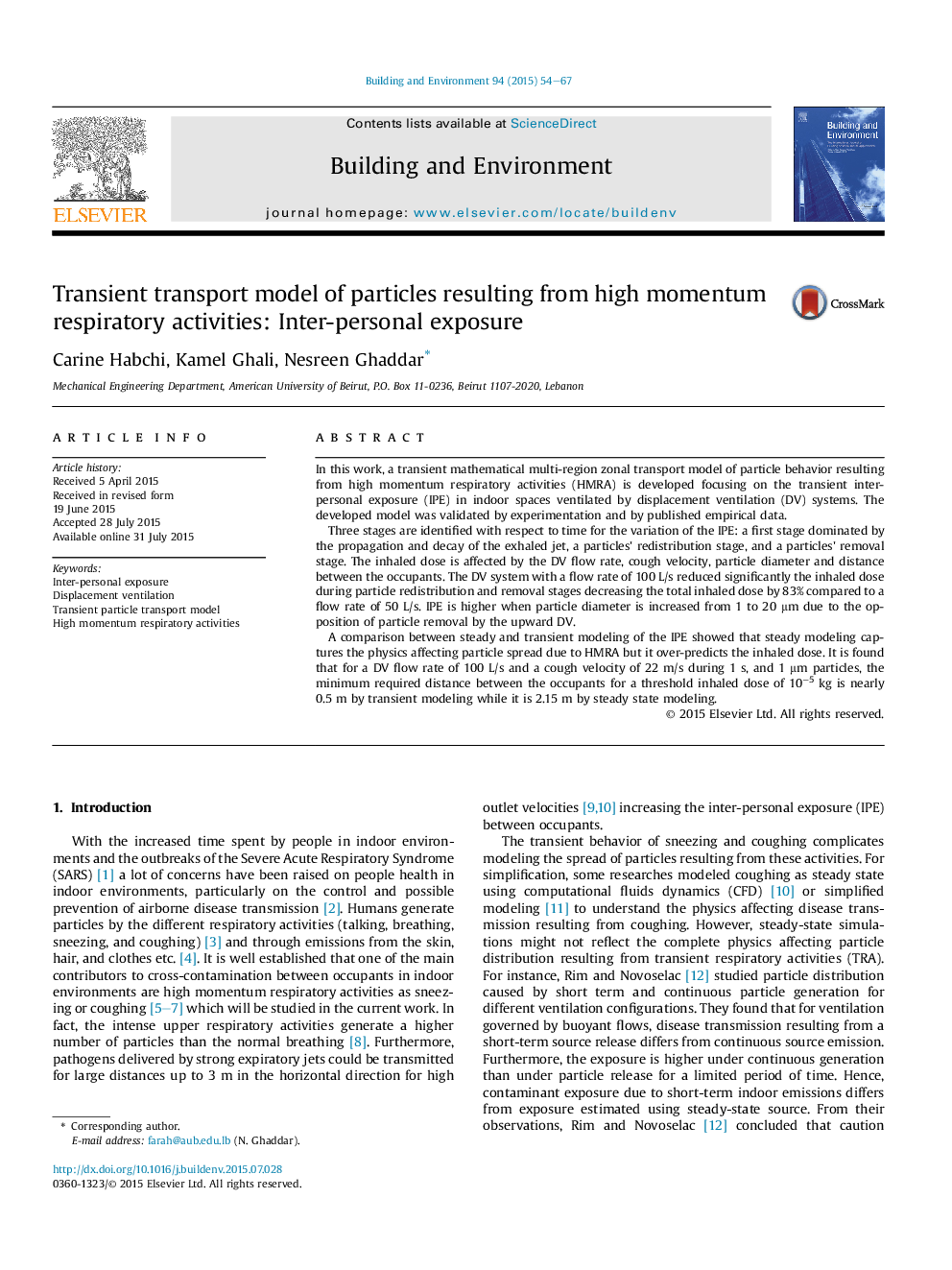| کد مقاله | کد نشریه | سال انتشار | مقاله انگلیسی | نسخه تمام متن |
|---|---|---|---|---|
| 247795 | 502528 | 2015 | 14 صفحه PDF | دانلود رایگان |
• Three stages are defined for time variation of inter-personal exposure due to HMRA.
• The inhaled dose during stage 1 is the highest due to propagation of the exhaled jet.
• For the studied cases, increasing the DV flow rate reduced the inhaled dose.
• Cough velocity, particle diameter and separating distance affect the inhaled dose.
• Steady state analysis of coughing over predicts the inter-personal exposure risk.
In this work, a transient mathematical multi-region zonal transport model of particle behavior resulting from high momentum respiratory activities (HMRA) is developed focusing on the transient inter-personal exposure (IPE) in indoor spaces ventilated by displacement ventilation (DV) systems. The developed model was validated by experimentation and by published empirical data.Three stages are identified with respect to time for the variation of the IPE: a first stage dominated by the propagation and decay of the exhaled jet, a particles' redistribution stage, and a particles' removal stage. The inhaled dose is affected by the DV flow rate, cough velocity, particle diameter and distance between the occupants. The DV system with a flow rate of 100 L/s reduced significantly the inhaled dose during particle redistribution and removal stages decreasing the total inhaled dose by 83% compared to a flow rate of 50 L/s. IPE is higher when particle diameter is increased from 1 to 20 μm due to the opposition of particle removal by the upward DV.A comparison between steady and transient modeling of the IPE showed that steady modeling captures the physics affecting particle spread due to HMRA but it over-predicts the inhaled dose. It is found that for a DV flow rate of 100 L/s and a cough velocity of 22 m/s during 1 s, and 1 μm particles, the minimum required distance between the occupants for a threshold inhaled dose of 10−5 kg is nearly 0.5 m by transient modeling while it is 2.15 m by steady state modeling.
Journal: Building and Environment - Volume 94, Part 1, December 2015, Pages 54–67
